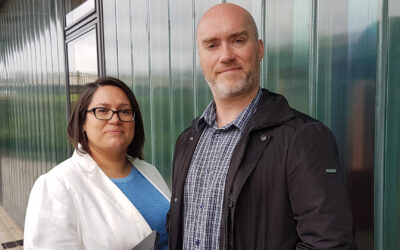Mike Todd, CEO of Near-Life – which works with organisations to develop and deliver immersive learning content – explains what tech businesses need to know when thinking globally.
For tech businesses, entering new markets can be a challenge. There are many unexpected roadblocks that you’ll encounter and, quite often, simple things can be overlooked when businesses are working at pace to scale-up.
The last 20 months have pretty much put a halt on opportunities to travel to face-to-face meetings and events. Last month, the Near-Life team attended one of North America’s leading learning technology conferences – DevLearn.
The opportunity to immerse ourselves in the event – discussing emerging trends with our peers, industry influencers and meeting potential prospects – was a great success, and really brought home the importance of in-person events when it comes to scaling technology globally. Here are some of the things I learned…
Communicating your point of difference in new markets
When it comes to scaling your tech in new markets, communication and consistency are key. From the outset we’ve focussed on making it easy for non-technical specialists to create their own immersive content.
We want to empower creators to make learning content that’s more engaging and impactful. We’ve always paid close attention to game design principles, and how we can allow people to add gamification features to content. This has also been applied to the way in which we explain our technology.
If your tech product has lots of complex detail, think about how you can display the information in a visual way to engage target audiences. Use video, animation and graphic elements to communicate your key messages and the benefits of your product most effectively to multiple audiences.
Maintaining momentum to maximise opportunities
Once you’ve launched your tech, there will be many distractions that will draw your attention away from some of the more mundane tasks that, I believe, are fundamental to maintaining momentum when scaling your business.
Attending DevLearn gave our team the opportunity to use the event to engage in constructive dialogue with a range of motivated specialists capable of giving us real insight as to what can help save time, effort – and improve results.
Through that dialogue, we were able to build an extensive list of those who were interested in what we’re doing. On a simple level, it’s then about diligent follow-up with those interested parties to stay on their radar and support their decision making around our product.
In-person activity should always also be supported with a robust digital strategy, as so much happens online. Maintaining consistent communication across your social media channels and wider networks about the journey your business is on and new milestones you’ve accomplished will keep your product front-of-mind with customers and new prospects.
There is then additional paid, targeted work you can do with PPC and other advertising to sustain the presence of your new products – making sure there is always information that potential users need once they have shown an interest.
Harnessing the pace of digital transformation
There are different kinds of immersive tech available today that can be applied to different learning scenarios – anything from a medical emergency to a construction site or an operating theatre.
The potential of immersive technology comes when it is customisable and allows organisations to design and deliver cutting-edge, immersive learning and training scenarios that are tailored to the needs of their business.
As the immersive learning market has grown, so has our competition. To differentiate, we focus on the flexibility and ease of use of our tool. Our software platform has a number of use cases and we are constantly evolving our tech based on dialogue with our users.
What has been key to harnessing the pace of digital transformation is understanding our products’ use cases in as much detail as we can so we can effectively communicate with different audiences in a way that directly speaks to their own priorities. Obviously there are cultural differences within different global markets, but there are also similarities across different sectors.
The challenge is developing a clear, universal message, that can be supported with detail and context that will appeal to those different audiences. One of the best investments of time you can make when scaling your tech product is to crystallise the benefits of your product and how it can help solve the specific problems of your target sectors in new markets.
Balancing physical and digital activity to build your presence
There is still an important role for conferences and exhibitions in providing that sense of an ‘event’ and the opportunity for businesses to physically get in front of prospects, advisors and specialists within their sector.
Very few tech businesses have the weight of Apple, for example, which can orchestrate its own launches with guaranteed exposure. For smaller start-ups and scale-ups, you need to understand the event landscape where your product or service is most relevant and strategically position yourselves to maximise the exposure that such an event can bring – through exhibiting, presenting and networking.
Building a communications plan around events for digital channels and engaging in conversations online will also maximise the success of your investment in any event and provide content that will live on after the event itself.











